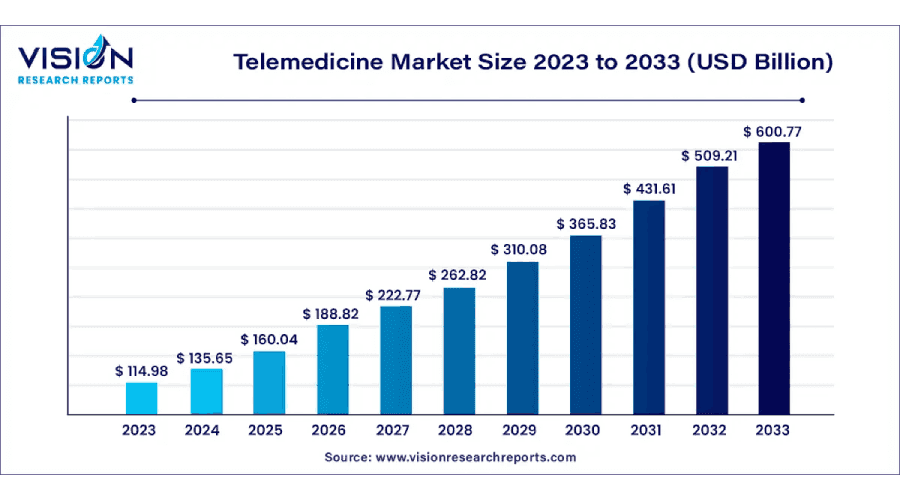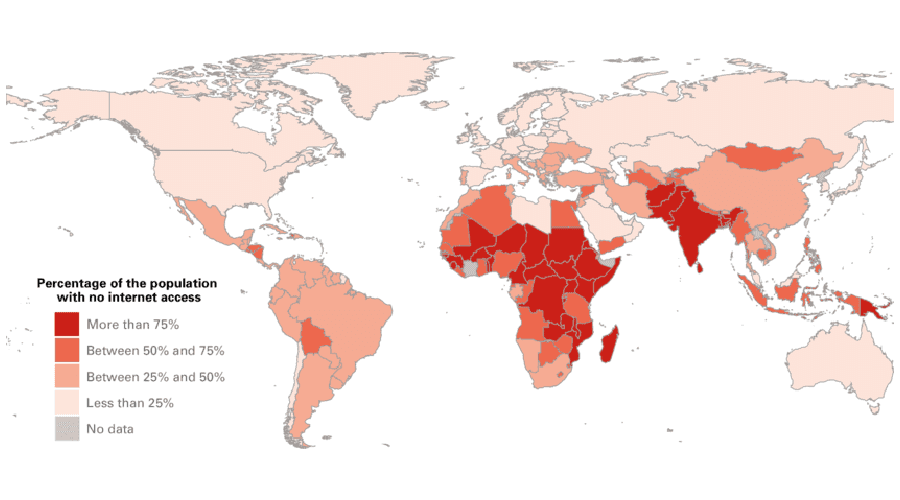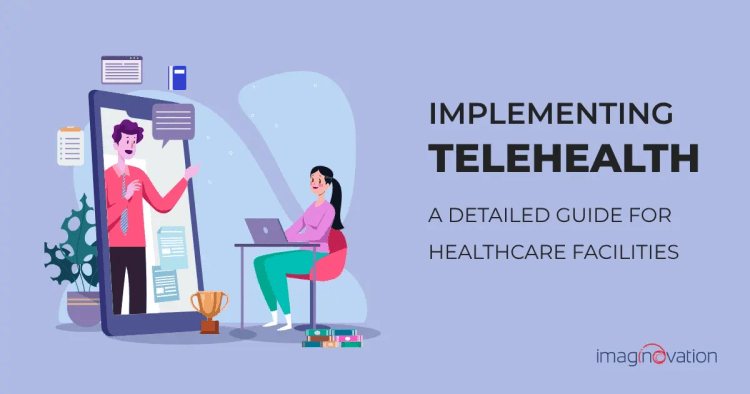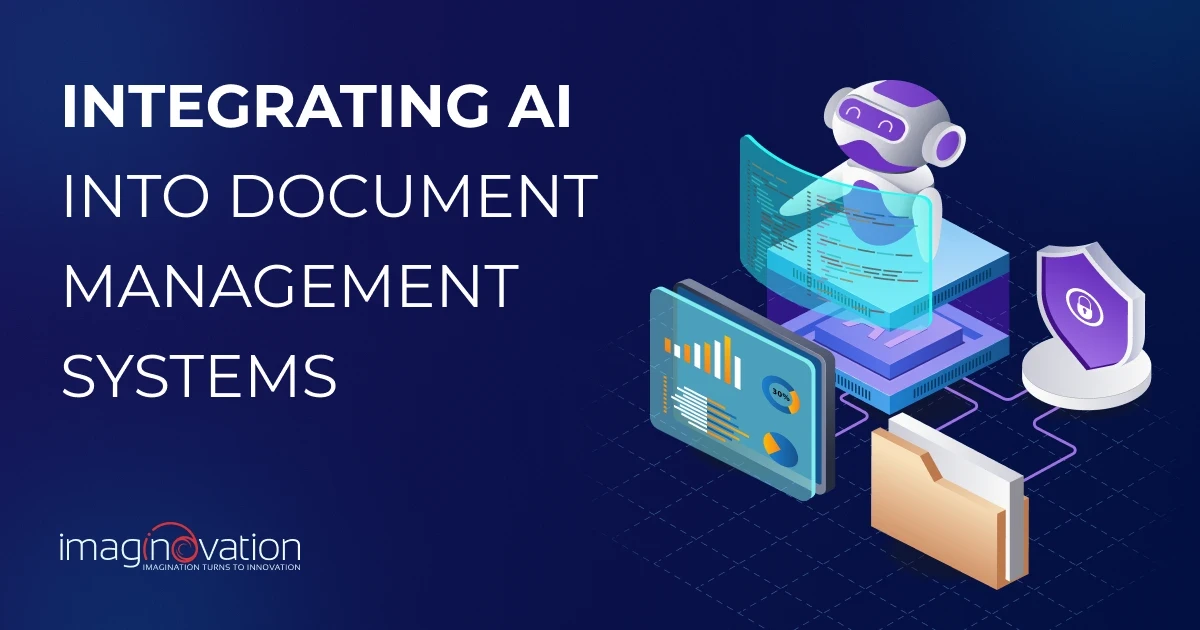The healthcare industry has been experiencing tremendous digital transformation, and telehealth plays a pivotal role. Its implementation had been on a steady increase over the last decade, but it was the COVID-19 pandemic that led to widespread adoption.
A survey on telehealth implementation in hospitals found that 78.6% of hospitals in the United States have installed a telemedicine solution, with states like Maryland taking the lead.
Telehealth has many benefits for healthcare providers and patients alike. Hospitals save on the cost of providing healthcare, while patients can access quality care wherever they are.
For example, patients living in underserved areas can liaise with their healthcare providers without making clinic visits.
Telehealth implementation can prove challenging for hospitals that have not used the technology before. It requires health literacy and technological proficiency for doctors and patients, which is not always possible for specific populations. We have prepared this guide to help you implement telehealth technologies flawlessly.
Understanding Telehealth and Its Significance in Healthcare
Telehealth, telemedicine, and digital health are used interchangeably yet have different definitions. Both technologies leverage telecommunication systems to help people access healthcare services remotely.
However, telehealth covers a broader range of healthcare services encompassing curative and preventive care, administration of medication, and provision of health-related educational resources.
Doctors use telehealth technologies to diagnose, treat, and monitor patients' conditions via remote monitoring devices, video conferencing, and mobile health applications.
Conversely, telemedicine focuses on healthcare delivery via technology-mediated communication, such as phone and video calls. The premise is to help patients and doctors exchange medical information without physical visits.
Digital health, on the other hand, involves using digital technologies like wearables, mobile apps, and electronic health records to improve patient care. These technologies help monitor patients remotely, enhance communication between patients and doctors, and track health care data.
One of the primary benefits of telehealth is its ability to expand access to healthcare services, particularly in underserved communities.
It bridges the gap, connecting such communities with healthcare providers via telehealth technologies. Patients can receive timely consultations, follow-ups, and specialist care without long-distance travel.
Patients can also leverage telehealth technologies to seek second opinions or specialized care from doctors otherwise out of reach.
Traveling to consult an international doctor can be expensive and time-consuming, but with telehealth technologies, you can easily talk to acclaimed international healthcare providers.
Similarly, telehealth technologies help disabled patients and the elderly access healthcare conveniently. The patients can liaise with their healthcare providers without making physical hospital visits.
Key Technologies Enabling Telehealth
The shift towards telehealth has improved accessibility to healthcare and helped healthcare providers streamline their operations while minimizing costs. However, certain technologies are responsible for telehealth implementation, expansion, and effectiveness. They include:
1. Video Conferencing Tools
Videoconferencing tools are critical to telehealth implementation. They help doctors and pharmacists conduct virtual consultations with patients, review their medical histories, and answer health-related questions.
Some video conferencing tools are so advanced that they have messaging platforms that allow patients to talk to their doctors and receive real-time advice.
Dedicated telehealth applications enable live video consultations, providing a face-to-face interaction crucial for accurate diagnosis and patient engagement.
2. Mobile Health Applications
Mobile applications enable patients to be proactive in managing their health. They can monitor the patient's symptoms, track medication adherence, and send alerts to doctors. On the other hand, healthcare providers use them to monitor patients' health remotely, access patient data to schedule appointments and make timely interventions.
Medical health applications benefit patients with chronic diseases by supporting self-management in many ways. Also, mobile applications make it easy to conduct virtual visits, eliminating physical clinic visits.
3. Remote Patient Monitoring Devices
Remote patient monitoring devices help healthcare providers track patients' health remotely. Doctors may prescribe devices like blood pressure monitors, glucose meters, pulse oximeters, and wearable fitness trackers to help transmit patient health data.
This continuous monitoring helps manage chronic conditions, detect potential health issues early, improve patient outcomes, and minimize healthcare costs.
4. Electronic Health Records
Electronic health records systems store patient information digitally, making it accessible to healthcare providers across different locations.
This centralized management of patient's medical information enhances the efficient exchange of patient information among doctors, making remote consultations flawless.
Access to a patient's comprehensive information also helps providers make informed decisions, reduce errors, and ensure continuity of care.
5. Artificial Intelligence
AI technologies have had a profound effect on telehealth implementation. They have introduced a new way of diagnosing and treating patients, and doctors can now personalize treatment plans and predict patient outcomes more accurately.
A study examining AI's impact on telemedicine found that the market will grow exponentially over the next decade.
Chatbots and virtual assistants, for example, provide preliminary consultation and triage, reducing the burden on healthcare professionals to talk with each patient. AI will also enable real-time patient monitoring, identifying patterns that may indicate emerging health problems.

6. Cloud Computing
Cloud computing has revolutionized the provision of telehealth services. It has eliminated traditional barriers to healthcare access by allowing healthcare providers to store vast amounts of patient data.
The technology makes patient data accessible for multiple users without compromising a device's performance. This scalability is critical to expanding telehealth services, especially for underserved communities and patients with mobility problems.
Also Read: Telemedicine App Development: Advancing Access to Quality Healthcare
Steps to Implement Telehealth in Healthcare Facilities
Implementing telehealth in healthcare facilities involves several vital steps to ensure successful integration and operation. This step-by-step guide can help you throughout the process:
1. Assessing needs and setting objectives
The first step is to evaluate the facility's current needs and identify areas where telehealth technologies can add value.
Define your target population, identify their preferences and barriers, and explain how telehealth will improve service delivery. You must also find ways to assess the impact and outcomes of implementing telehealth.
This data helps you determine if telehealth is a worthwhile investment and identify areas of improvement. Answering these questions lets you define the project's purpose, scope, and objective.
2. Choosing the right technology platform
The next step is to identify the technological model required to implement telehealth. The model should be user-friendly, aligned with the facility’s needs, and compliant with healthcare regulations. Telehealth takes on different models:
- Synchronous care: This model supports live interaction between the patient and the healthcare provider via video calls, audio (when it’s not possible to do a video call), and secure text messaging (when answering patients’ questions)
- Asynchronous telehealth: This model is called store and forward telehealth because communication between patients, providers, and caregivers happens at different times.
Healthcare providers use this model when sending a patient’s lab results, messaging with follow-up instructions, or when patients are sending images for evaluation. Remote patient monitoring and mobile health are excellent examples of asynchronous telehealth.
3. Training Staff and Clinicians
Proper training of healthcare providers, IT personnel, and administrative staff is critical to ensuring they can effectively utilize telehealth solutions. Understanding the model’s features enhances the patient’s experience and builds trust.
4. Integrating systems with existing healthcare IT infrastructure
The next step is to integrate the desired telehealth model/platform into the existing Electronic Health Record for optimal efficiency in service delivery. This helps align the telehealth processes with the existing administrative, clinical, and financial functions.
It would help if you considered factors such as the facility’s EHR standards integrating the model into the system. Most hospitals’ EHR systems use HL7 v2 and FHIR standards, which don’t specify how data is stored. This makes exchanging information between the telehealth system and RHR challenging.
As such, the facility may need to develop an extra layer of protection, e.g., using the FHIR LIHT standard to facilitate the exchange of information between the systems to eliminate data loss.
5. Ensuring compliance with health regulations and data privacy standards
Ensure the model complies with the relevant local, state, and federal policies and regulations regarding telehealth.
Compliance is critical for healthcare providers handling private health information that transitions to automated operations via telehealth technologies. It protects patients’ health information and the health institution from financial losses.
In the United States, the Health Insurance Portability and Accountability Act (HIPAA) sets the standards for patient data protection, hence the need to comply with the regulations therein.
Overcoming Challenges in Telehealth Implementation
Implementing telehealth presents many benefits to health institutions and patients alike. Patients enjoy increased access and convenience to quality healthcare while hospitals realize potential cost savings.
However, its implementation poses several challenges that healthcare providers should consider. Here are some key challenges and strategies to overcome them:
Licensure Requirements
Each state in the US has different licensure requirements and regulations for healthcare providers. However, the virtual nature of telehealth means that providers must traverse various states to reach patients.
Familiarizing and complying with specific licensure requirements governing telehealth is time-consuming and expensive.
Solution
States should consider relaxing the licensure requirements for telehealth care professionals. Also, professionals with licenses in their home states should be allowed to cross state lines and treat patients with few or no restrictions.
Technological Barriers
To demonstrate the percentage of aged people without internet access in the United States.
Underserved communities may experience limited internet connectivity, yet it's the primary tool for implementing telehealth.
With some communities living off the grid, taking advantage of telehealth technologies can be challenging. Also, the patients' technical literacy may prevent them from enjoying telehealth benefits because telehealth platforms require a certain level of proficiency.
This problem is particularly rife among older people and communities with limited internet connectivity.

Solution
The best way to overcome technological challenges is to establish training programs for patients and healthcare providers. The health institution may hire experts to educate them to enhance technical literacy.
Also, healthcare facilities can work with local governments to improve broadband services in underserved communities. Improved access allows patients to utilize telehealth platforms the healthcare facility recommends.
Patient and Healthcare Provider Adoption
Minimal experience utilizing telehealth solutions may cause patients and providers to refrain from using or adopting the technology.
On the one hand, patients have limited experience, and on the other, doctors feel under-compensated for the additional work. Adoption rates began to increase during the COVID-19 pandemic.
Solution
Involving patients and providers from the onset reduces resistance and encourages them to use telehealth solutions.
Medical Record Integration
Integrating the solutions into an established electronic health record system is time-consuming and increases the cost of telehealth implementation. The provider must use data exchange protocols that align with HIPAA to ensure data protection, yet a lack of integration leads to duplicate documentation.
Solution
Health institutions can enlist the help of technical experts to integrate the systems, enhancing efficiency and minimizing the burden on clients.
Best Practices for Successful Telehealth Implementation
Implementing telehealth successfully involves integrating technology, patient care, staff training, and regulatory compliance. Here are some best practices for successful telehealth implementation:
Engage the Key Stakeholders from the Onset
Involving key stakeholders, such as patients and doctors, early on increases buy-in and commitment to using telehealth solutions. These doctors interact with patients directly; thus, engaging them from the onset helps them understand their workflows and find ways to integrate the solutions smoothly.
Study the Target Population
Before implementing telehealth solutions, you need to understand your target population. Identify their needs, such as whether they need additional support or if their condition can be managed without hands-on support.
Also, find out the population's limiting factors and technical proficiency. These factors help you understand the type of telehealth solutions to apply and the intensity of training required.
Leverage the Power of Data Analytics
Telehealth solutions always collect patient data, which healthcare providers can leverage to improve outcomes. For example, individuals with chronic illnesses like heart failure and diabetes need constant monitoring and urgent responses to their health needs.
When coupled with data analytics, professionals can identify patterns in patients' data, predict possible health deteriorations, and adjust treatment plans accordingly.
Educate Patients
Educating patients about telehealth solutions is essential. You can develop patient-friendly resources and provide virtual instructions for joining appointments to ensure patients are engaged and familiar with the telehealth process.
Provide Continuous Care
Maintaining high standards of continuous care remotely enhances healthcare outcomes and builds trust. This is possible by integrating telehealth visits seamlessly with in-person visits.
When patients receive comprehensive care consistently, they're confident about the quality of care regardless of the medium.
Implement Telehealth for Your Healthcare Facility with Imaginovation
Implementing telehealth in healthcare facilities is a multifaceted process that requires careful planning, collaboration, and ongoing evaluation. These steps can help you integrate telehealth services to enhance patient care and operational efficiency.
Even so, enlisting the help of our team to assist you with the integration process can't be understated. Experts at Imaginovation are ready to help you! We understand how to develop and implement telehealth. Our team will help you set one up and tailor it to your needs.
Partnering with Imaginovation can help healthcare providers achieve improved patient care, enhanced efficiency, and greater compliance with healthcare standards through robust, customizable healthcare mobile app solutions.
Ready to build an app, but not sure where to start?
We've got you covered. Click the button below to get started.





